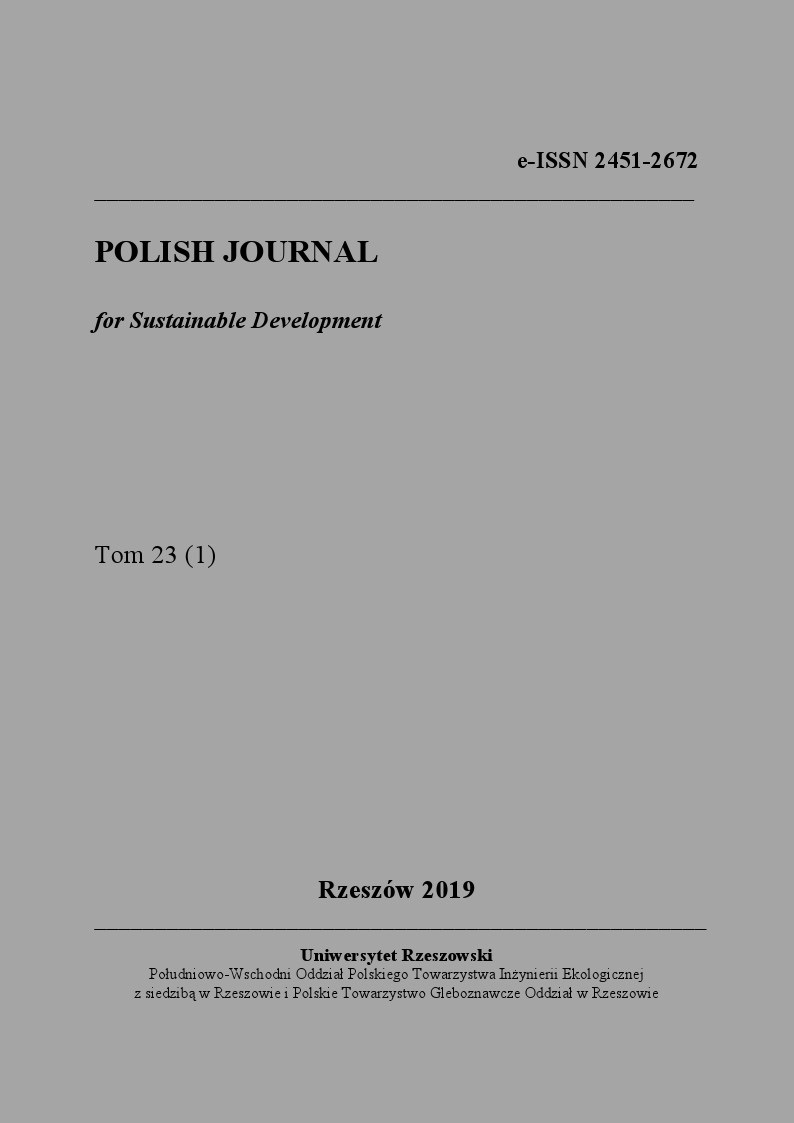Wartość pastewna wybranych półnaturalnych zbiorowisk trawiastych obszarów przyrodniczo cennych na Wyżynie Miechowskiej
DOI:
https://doi.org/10.15584/pjsd.2019.23.1.2Słowa kluczowe:
murawy kserotermiczne, skład botaniczny, plonowanie, wartość pastewnaAbstrakt
Ekosystemy muraw kserotermicznych niewykorzystywane rolniczo podlegają wtórnej sukcesji w kierunku ciepłolubnych zarośli kserotermicznych i różnych postaci lasu. Obniżając spadek powierzchni tych obszarów podejmuje się różne działania m.in. ekstensywne użytkowanie poprzez wypas zwierząt, głównie owiec. Stąd uzasadniona wydaje się ocena tego typu zbiorowisk pod względem ich wykorzystania pastewnego. Celem pracy była ocena runi muraw kserotermicznych pod kątem paszowym w oparciu o skład botaniczny, plonowanie oraz zawartość podstawowych składników pokarmowych. Na podstawie przeprowadzonych badań stwierdzono, że w składzie botanicznym analizowanej roślinności dominowały Brachypodium pinnatum i Inula ensifolia, co pozwoliło na wyodrębnienie płatów o charakterze trawiasto-zielnym oraz zielnym. Zbiorowisko to należy do zespołu Inuletum ensilfoliae i cechuje się dużym bogactwem gatunków roślin naczyniowych, ze średnią liczbą gatunków w spisach florystycznych wynoszącą od 46 do 63. W zbiorowisku tym stwierdzono także 35 gatunków objętych ochroną częściową, bądź całkowitą. Względem uzyskanych plonów suchej masy wyodrębniono zbiorowiska plonujące bardzo słabo i nieliczne zbiorowiska, które plonowały na poziomie średnim. Pod względem żywieniowym, ruń muraw kserotermicznych miała niską zawartość białka ogólnego, niewiele prób roślin cechowało się odpowiednią zawartością włókna surowego.
Downloads
Bibliografia
AOAC. 2003. Official Methods of Analysis of AOAC International. 17th ed. Gaithersburg. MD USA. Association of the Official Analytical Chemists (AOAC) International.
Barańska K. 2014. Podręcznik najlepszych praktyk ochrony kseroterm. Dla różnorodności biologicznej. Warszawa. 5-34.
GUS. 2018. Wyniki produkcji roślinnej w 2017 r. Warszawa. ss. 74.
Kostuch R., Misztal A. 2007. Roślinność kserotermiczna istotnym elementem bioróżnorodności Wyżyny Małopolskiej. Woda - Środowisko - Obszary Wiejskie. T. 7. z. 2b (21). 99-110.
Kozłowska A. 1923. Stosunki geobotaniczne ziemi miechowskiej. Spraw. Kom. Fizjogr. PAU. 57. 1-68.
Matuszkiewicz W. 2002. Przewodnik do oznaczania zbiorowisk roślinnych Polski. Warszawa PWN. wyd. III.
Mirek Z., Piękoś-Mirkowa H., Zając A., Zając M. 2002. Flowering plants and pteridophytes of Poland, a checklist. (Krytyczna lista roślin naczyniowych Polski). IB PAN. Kraków.
Musiał K., Walczak J., Pawłowska J. 2018. Kształtowanie się wybranych parametrów jakościowych mleka owcy olkuskiej poprzez wypas na murawach kserotermicznych z klasy Festuco-Brometea. Rocz. Nauk. Zoot. T. 45. z. 1. 99-112.
Nazaruk M., Jankowska-Huflejt H., Wróbel B. 2009. Ocena wartości pokarmowej pasz z trwałych użytków zielonych w badanych gospodarstwach ekologicznych. Woda - Środowisko - Obszary Wiejskie. IMiUZ. Falenty. t. 9. z. 1(25). 61-76.
Niżnikowski R., Jóskowiak L., Wójcik R. 2017. Ekstensywny wypas owiec w ochronie przyrody i krajobrazu. Wiadomości Zootechniczne. R. LV. 2. 92-100.
NRC DLG. 1988. Nutrient Requirements of domestic animals. Nutrient requirements of sheep. National Academy of Sciences. Washington. DC.
Połujański A. 1854-1855. Opisanie Lasów Królestwa Polskiego i guhernii zachodnich Cesarstwa Rosyjskiego pod względem historycznym, statystycznym i gospodarczym. Warszawa. T. 1. 1-427 + mapa + 11 tabl. T. 2. 1-277 + 2 tabl. T. 3. 1-156 + tabl. T. 4. 1-167.
Sokołowicz Z., Topczewska J. 2016. Chów zwierząt w gospodarstwach ekologicznych w aspekcie zrównoważonego rozwoju. Polish Journal for Sustainable Development. Rzeszów. T. 20. 169-176. DOI: 10.15584/pjsd.2016.20.18
Soler Luque Z., Kostecka J. 2018. Biodiversity loss, the causes, the state and basic form of nature protection in Spain and Poland. Polish Journal for Sustainable Development. Rzeszów. T. 22(2). 75-84. DOI: 10.15584/pjsd.2018.22.2.9
Pobrania
Opublikowane
Numer
Dział
Licencja
Prawa autorskie (c) 2019 Polish Journal for Sustainable Development

Utwór dostępny jest na licencji Creative Commons Uznanie autorstwa – Użycie niekomercyjne – Bez utworów zależnych 4.0 Międzynarodowe.


